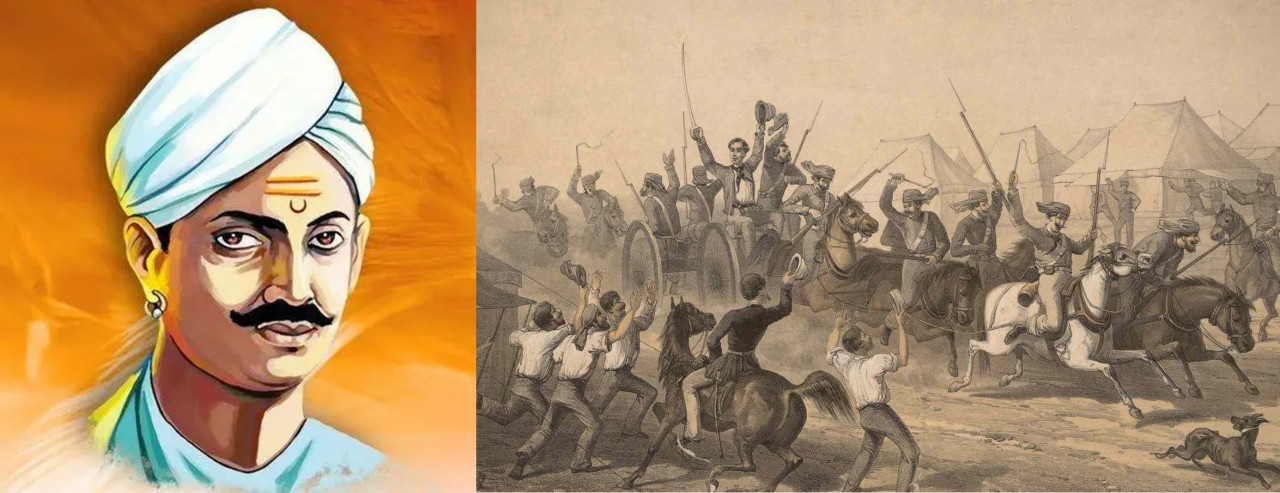Mangal Pandey

- 09 Apr 2024
Why is it in the News?
Sepoy Mangal Pandey likely didn't anticipate that his shot at the Sergeant Major of his regiment near Kolkata on March 29, 1857, would ignite a significant event in Modern Indian history—the Revolt of 1857, also known as the Sepoy Mutiny or the First War of Indian Independence.
Who was Mangal Pandey?
- Mangal Pandey was a prominent historical figure who played a pivotal role in India's struggle for independence from British colonial rule.
- Born in the kingdom of Awadh, which contributed significantly to the East India Company's army, Mangal Pandey joined the 34th Bengal Native Infantry at the age of 22.
Annexation of Awadh:
- In 1856, the British annexed Awadh in a treacherous act that provoked widespread anger and resentment among the local population.
- The deposition of the Nawab and the subsequent confiscation of villages from the taluqdars during the land revenue settlement of 1856 only exacerbated the situation.
Mangal Pandey's Mutiny and Execution:
- The introduction of the Enfield rifle, which used animal fat (beef and pork) in its cartridges, was met with fierce resistance from soldiers like Mangal Pandey.
- They perceived the use of these cartridges as a direct affront to their religious beliefs.
- On March 29, 1857, Mangal Pandey openly revolted, firing at his Senior Sergeant Major in protest.
- His act of defiance led to his capture, and he was subsequently hanged by order of a Court Martial at Lal Bagan in Barrackpore.
- Mangal Pandey's sacrifice and bravery in the face of British oppression have earned him a lasting place in India's history as a symbol of resistance against colonial tyranny.
The Expansion of the 1857 Revolt and Its Lasting Impact:
- The bravery exhibited by Mangal Pandey inspired a wave of resistance among other soldiers, notably those of the 7th Awadh Regiment.
- On May 11, 1857, a group of Sepoys from Meerut refused to use the new cartridges and killed their European officers, marching to the Red Fort in an act of defiance.
The Legacy of the 1857 Revolt:
- The revolt of 1857 had far-reaching consequences and reshaped the dynamics of British rule in India.
- In response to the growing unrest, the British Parliament passed the Government of India Act in 1858, effectively transferring all powers of the East India Company to the Crown.
- Queen Victoria was subsequently declared the Sovereign of British India.
- The Queen's Proclamation, announced by Lord Canning in 1858, introduced a new policy of perpetual support for the native Princes and pledged non-intervention in matters of religious beliefs in India.
- This policy was further reinforced in 1877 during the Delhi Durbar, where Queen Victoria assumed the title of Qaiser-e-Hind, reflecting her position as the Empress of India.
- The 1857 revolt, sparked by Mangal Pandey's actions, marked a turning point in India's struggle for independence and continues to be remembered as a pivotal moment in the nation's history.
